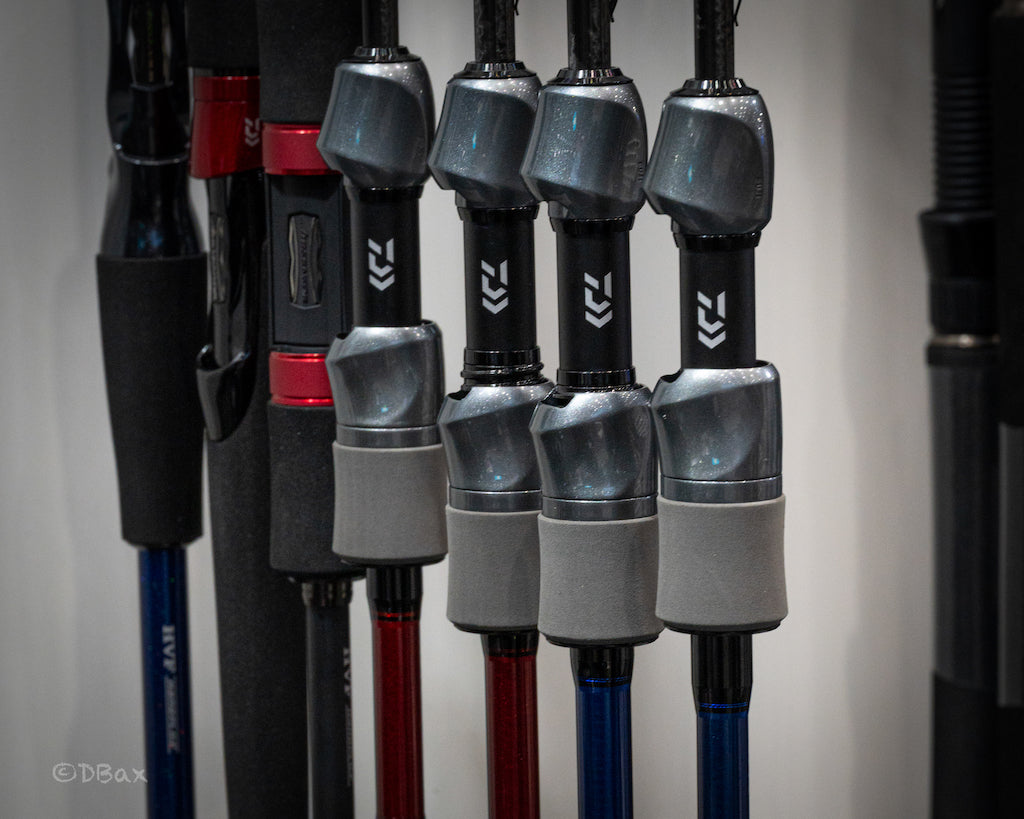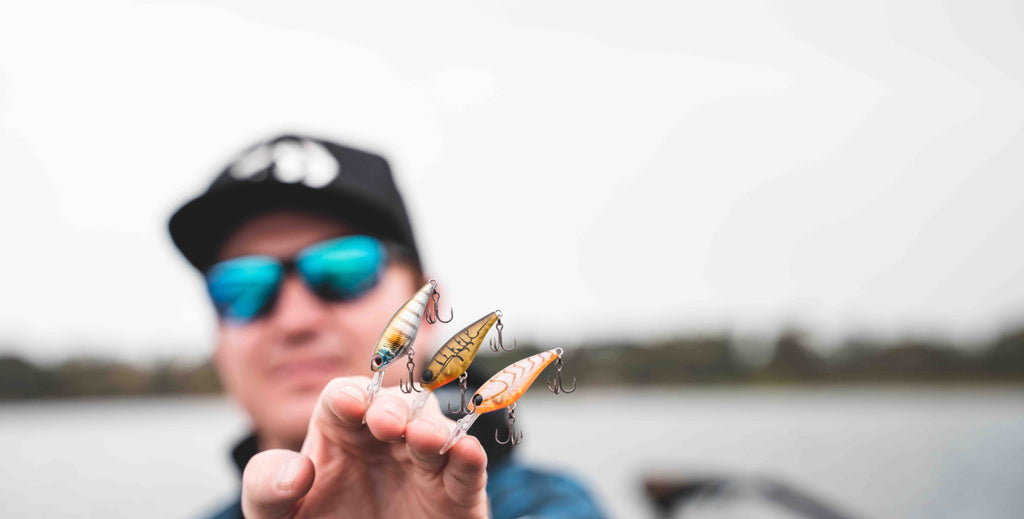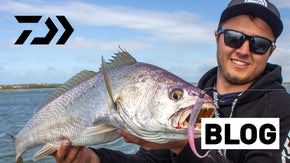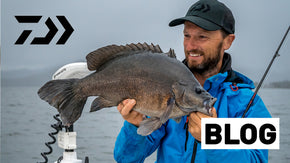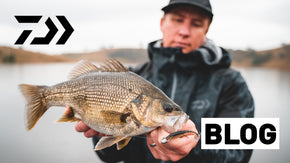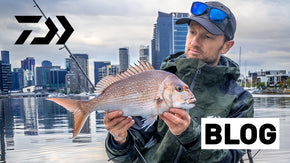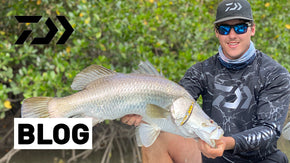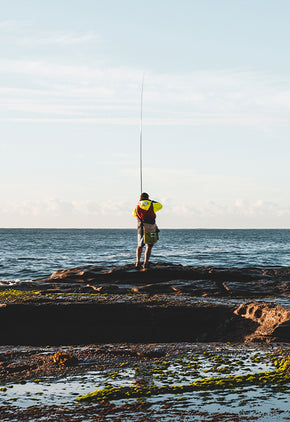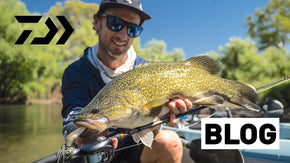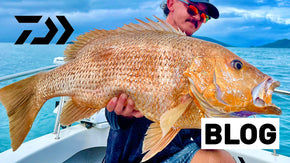Posted 11th August 2023
How to Catch Flathead on Soft Plastics (Flathead Series)
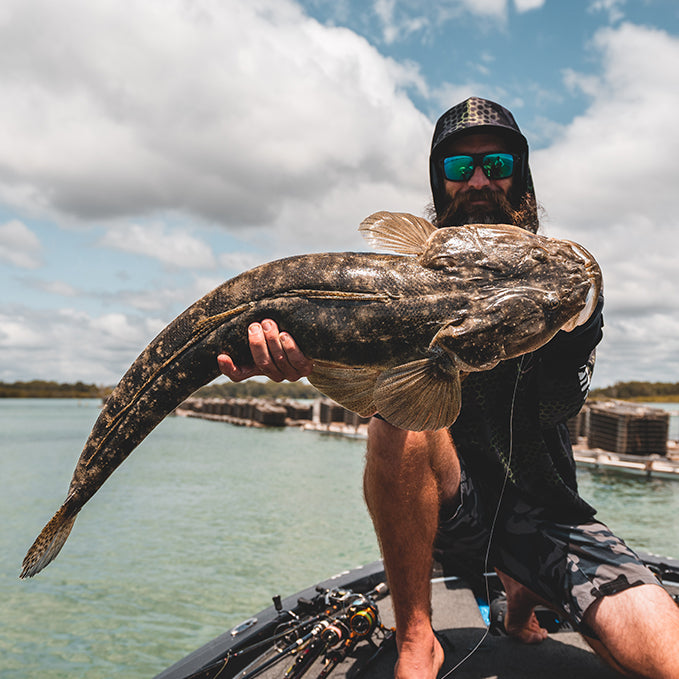
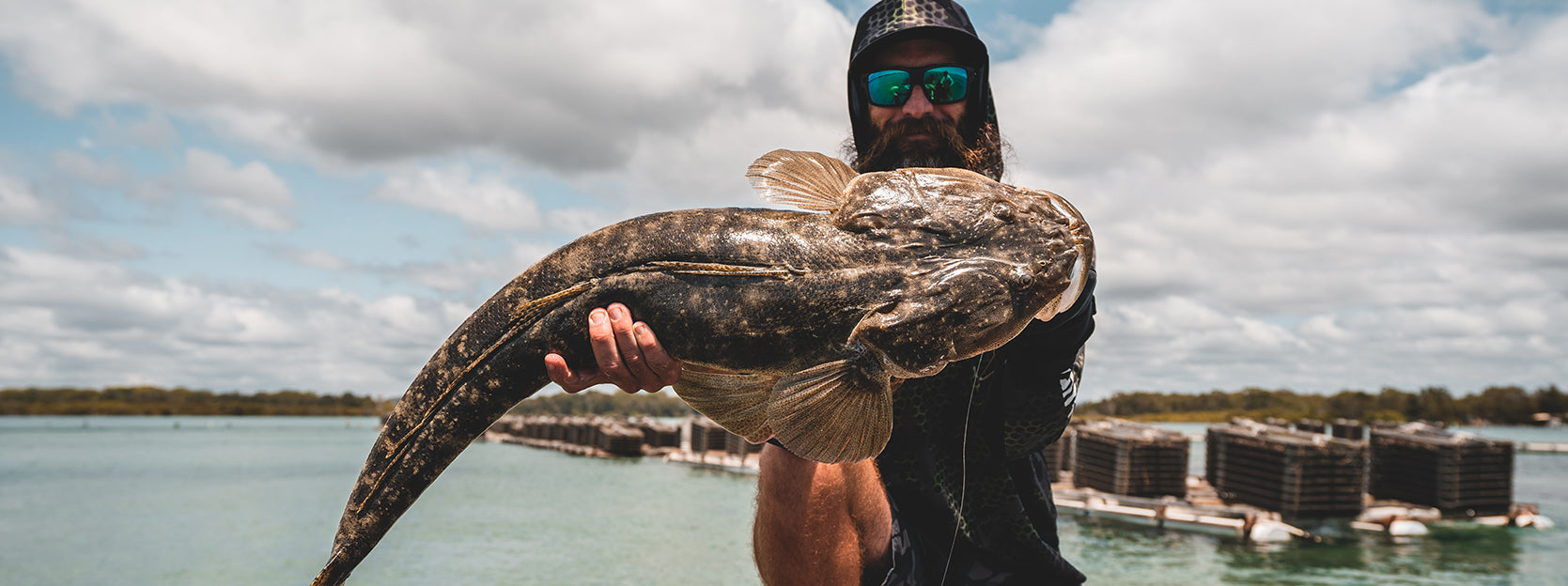
By Robert Thornton
Along our East Coast from about Cairns to the Gippsland region, the first bit of warmth at the beginning of spring screams flathead! While there is some variation in peak times along the coast, that initial bump in the temperature readings is always a good time to have a lure in the water for flatties. In this series we’re going to look at how to catch flathead on lures, and there’s no lure more synonymous with flathead than soft plastics!
Recent years have seen an explosion of other techniques and presentations enter the mainstream; however, plastics are still a go-to for so many anglers, and the simple reason for that is that they work! It’s certainly easy for any angler to head down to a local estuary and toss any old soft plastic in the water, and doing this might even land you fish or two. For consistent success, though, having an understanding of different soft plastics, techniques and rigging methods is essential.
If you’re new to lure fishing, don’t let this intimidate you – it’s much more straightforward than it sounds. Flathead are a species that a lot of anglers honed their soft plastic skills on, and even after years of chasing them many still come back to this effective and exciting method.
In this blog we will focus specifically on targeting dusky flathead using soft plastics. You can read our blog that covers flathead fishing more generally here, and another piece covering how to use soft plastics in saltwater here.

The Soft Option
Using soft plastics to catch flathead goes back as far as soft plastics do in Australia, which is at least the 1980s. Since then, Australian tackle developers have been designing soft plastics specifically for Australian fish, with flathead being one of the main species they had in mind.
You only need to look at Daiwa’s Australia’s contribution to the soft plastic market with the Bait Junkie range to understand that flathead are still a key species in the plastic world.
Different shapes, colours and sizes serve to imitate a wide variety of common prey items for flatties. Sure, you could use one particular style for all waterways, and you’ll probably catch a few flathead, but this approach will limit your results and not allow you to utilise the versatility of these great lures.
Versatility is such a prominent factor with soft plastic fishing, and the main reason why so many anglers choose to keep them in their arsenal. When rigged and fished suitably, anglers can use plastics to fish at any depth, any speed, anytime and anywhere!
So, let’s now look at a few different soft plastic types and how to get the most out of them for flathead.
Grubs and Curly Tails
In soft plastic language, ‘grubs’ are usually characterised by a cylindrical body and a flat-sided or ribbon-like tail that curls when the lure is stationary, hence their other name ‘curly tail’. When moved through the water, this tail will come to life and give the lure a subtle but irresistible swimming action.
Grubs are a hugely popular soft plastic type for a few reasons. Firstly, they are incredibly easy to use, with a straight retrieve often enough to catch the eye of flatties. Secondly, their generic shape is fantastic for imitating a wide variety of prey items and are especially useful when trying to locate fish or figure out how the fish are biting on that particular day.
There are two ranges that fit into this category in the Bait Junkie stable, the Grub (available in 2.5 and 4”sizes) and the new 3” Wave Minnow.
The Bait Junkie Grub is an excellent general bait for flatties, and can be fished across shallow flats, over drop-offs, around structure and even in deep holes. A slow roll is enough to get an enticing action from the tail, while sharp hops can see the Grub darting around erratically and attracting flatties from afar.
The Wave Minnow is slightly different and designed for a more refined approach. The unique ‘wave’ shape of the tail is designed to catch the water and produce an action at the slowest speeds. This in conjunction with the slimmer body than the Grub makes it incredibly effective when the bite is slow and a subtle approach is needed. When rigged on a Bait Junkie Finesse Jighead (ideally between 1/12-1/8oz), the Wave Minnow will sit nose down, tail up thanks to the design of the jighead. What this means is that even at rest, the Wave Minnow’s tail will still be moving around with the current, meaning your lure is working even when you’re not working it! These innovative lures are ideal for when the conditions are stacked up against you and the bite is tough, and it’s definitely worth having a few in your box.

Minnows, Shads and Paddle Tails
These plastics are typified by a fish-shaped body and a boot-like ‘paddle tail’, and when the lure is moved forward the tail kicks side-to-side. Well-designed paddle tail plastics will also get a rolling action through the body when worked, like Daiwa’s Bait Junkie Minnow range, available in 2.5, 3.2, 4.2 and 6.2” sizes.
These lures are the most versatile soft plastic type, especially for flathead. The Bait Junkie Minnow can be worked fast and slow, can be fished deep or shallow, and can be rigged standard, weedless and weightless!
The 2.5 and 3.2” sizes are perfect for all-round flathead fishing, with 1/16-1/4oz Finesse Jigheads ideal, depending on the depth you’re fishing. The 4.2 and 6.2” models are great for picking out the larger fish, with heavy 1/2oz Bait Junkie Heavy Wire Jigheads excellent for searching the depths, and 1/8oz weights a good option when rolling and hopping them across the flats. Once again, these lures will sit chin down on the bottom when rigged on Bait Junkie Jigheads, resembling a little foraging fish.
While slow rolling retrieves will get a tantalising action out of these lures, these baits really shine for flatties when worked with the rod tip. On those days when the flatties are really aggressive and on the bite, a Minnow allowed to rest momentarily on the bottom between a series of sharp hops can be absolutely deadly on flathead.

Jerkshads and Fluke Tails
While less commonly used specifically for flathead these plastics still catch a lot of them, and in certain situations they are the perfect tool for bringing flatties to the bank, kayak or boat. These lures usually have a long, tapered body with a double-forked tail, known to American anglers as a ‘fluke’. The Bait Junkie 5 and 7” Jerkshad, as well as the new 2.95” Flick fit this description. These lures are designed, as their names suggest, to be jerked and flicked with the rod tip, which sees them darting around like a wounded baitfish.
This soft plastic type can work in many situations, but for flathead they are excellent for imitating long, skinny prey such as garfish, whiting, pike and other common forage for flatties. Fishing them in ultra-shallow water can be successful, however they are at their best in deeper water and/or in stronger current. Their body shape allows them to sink relatively fast, and they can be worked erratically right up off the bottom to make their presence known to any nearby flathead.
One thing unique to the Bait Junkie Jerkshad is that when wound quickly they exhibit an incredible ‘S’ wave swimming action, thanks to the segmented body design and supple plastic material that all Bait Junkies are made from. This feature just adds a level of versatility to this lure, and bigger hungrier flathead absolutely love them.
The 2.95” Flick is a little different, with a ‘shovel’ tail designed to see it glide on the fall. Just like the Jerkshad though, this plastic will dart around when hopped with the rod and is the perfect lure for imitating small but fast-moving prey.
Both these lure series can be rigged weedless on EWG style hooks, however the Jerkshads and 2.95” Flicks work best with 1/4-5/8oz and 1/16-1/4oz standard jigheads respectively.

Prawns, Shrimps and Other Creature Baits
The last plastics we will look at are the miscellaneous varieties, which are by no means any less effective than their more generic counterparts. In fact, in the right conditions these will outshine the others!
In the Bait Junkie range, the Risky Critter and 3” Prawn slot nicely into this category, and are great tools to have when the flatties are feeding specifically on prawns, shrimps, aquatic insects, yabbies and basically anything other than small fish! Many estuary systems up and down the East Coast have seasonal runs of prawns and other small crustaceans, and this is when you should have one of these tied on!
The Risky Critter is ideal for fishing on lighter jigheads between 1/30-1/12oz. With forward and rear-facing legs that are designed to ‘quiver’ and two main curl tail legs that swim on the fall and when rolled or hopped, this bait is perfect for fishing with plenty of hang time. On the bottom, these two main legs will sit pointing up when rigged on a Bait Junkie Jighead, resembling a defensive position of a small yabby or crab. Make sure to fish these baits slowly and the flathead will start climbing on!
The 3” Prawn is a new addition to the Bait Junkie Range and is suited to those times when the estuary you’re fishing is full of prawns making their perilous dash to the sea. The segmented design of these baits was developed to mimic a prawn’s natural movements, and just like with the Risky Critter, the forward-facing legs will quiver just like on a real prawn. What’s more, the tail shape will give the 3” Prawn a shimmy action on the sink and on a straight retrieve, adding extra movement to those legs, while sharp hops will see the whole tail section snapping up and down like a real prawn in distress.
These lures can be rigged with virtually any weight in a standard or weedless jighead. The key with them is to throw them where there are real prawns nearby. These lures are bound to catch a lot of flathead, but don’t be surprised if something else jumps on instead, as prawns are a staple part of many fishes’ diet!
A Soft Sell
At this stage, most anglers don’t need any convincing that soft plastics work for flathead; the proof is all around. By understanding how different designs and shapes are best utilised for these fish, you should soon be able to see that proof yourself!
With a stack of new and exciting creations from Daiwa out now, and many more in the works, there never was a better time to start chasing flatties with soft plastics!


 Contact Us
Contact Us Blog
Blog About
About
